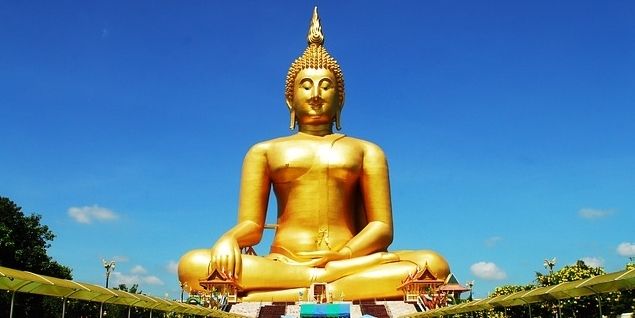
Buddha Purnima: Celebrating Buddha's Birth Anniversary
Today is Buddha Purnima. It is also known as Buddha Jayanthi and is a public holiday in India. The day is celebrated in Budhist majority countries all over the world. The day is marked as Buddha's Birth Anniversary, who is believed to have lived from 563 BCE to 480 BCE or sixth and fourth centuries BCE according to legends. Gautama Buddha is the leading figure in Buddhism and revered throughout the World in the Buddhist majority countries. In India, it is especially observed in Ladakh, Sikkim, Arunachal Pradesh and Bodh Gaya. The parts of North Bengal including Darjeeling, Kurseong , Kalimpong too celebrate this day. In Maharashtra, a state in which 73% of total Indian Buddhists reside, the day is marked with respect. It is observed by Buddhist followers as the visit Viharas to observe a full-length Buddhist sutra. They all dress in pure white. The non-vegetarian food is usually avoided by them on this auspicious day. Kheer, or a sweet rice porridge is specially served to remember the fable of maiden Sujata, who offered the Buddha a bowl of milk porridge. The day is informally called "Buddha's Birthday", which actually observes the birth, nirvāna (enlightenment), and Parinirvāna (passing away) of Gautama Buddha. According to Buddha's legend, shortly after the birth of prince Siddhartha, an astrologer visited his father King Śuddhodana. He predicted that Siddhartha will either become a great king or renounce the world and become a holy man. It will depend on what kind of life he saw outside the palace premises. The King Śuddhodana prevented Siddhartha from venturing out of the palace grounds, as he wanted to see the young prince become a king. Despite his father Śuddhodana’s precautions, prince Siddhartha went out beyond the palace walls by the age of 29. During these visits he came across a series of encounters, known as the four sights in Buddhist literature, Gautama came to know of the suffering of common people. He saw an old man, a sick man, a corpse and, lastly, a holy man, who seemed at peace with himself and the world. These encounters led Gautama to leave his royal life behind and walk on a spiritual path in quest of eternal peace and truth. It is believed that the Gautama Buddha followed the path of asceticism to gain enlightenment as was seen by many in those times. He meditated for a length of time without adequate intake of food and water. It caused his body to go weak. Noticing the weak Siddhartha Gautama, a girl named Sujata offered a bowl of milk to him. Gautama taught his followers a Middle Way between sensual indulgence and the severe asceticism of those days. He later propagated his teachings throughout other regions of eastern India including Magadha and Kosala. Gautama Buddha’s teachings transcend all the man-made borders of the world and are like a beacon to the whole humanity.
